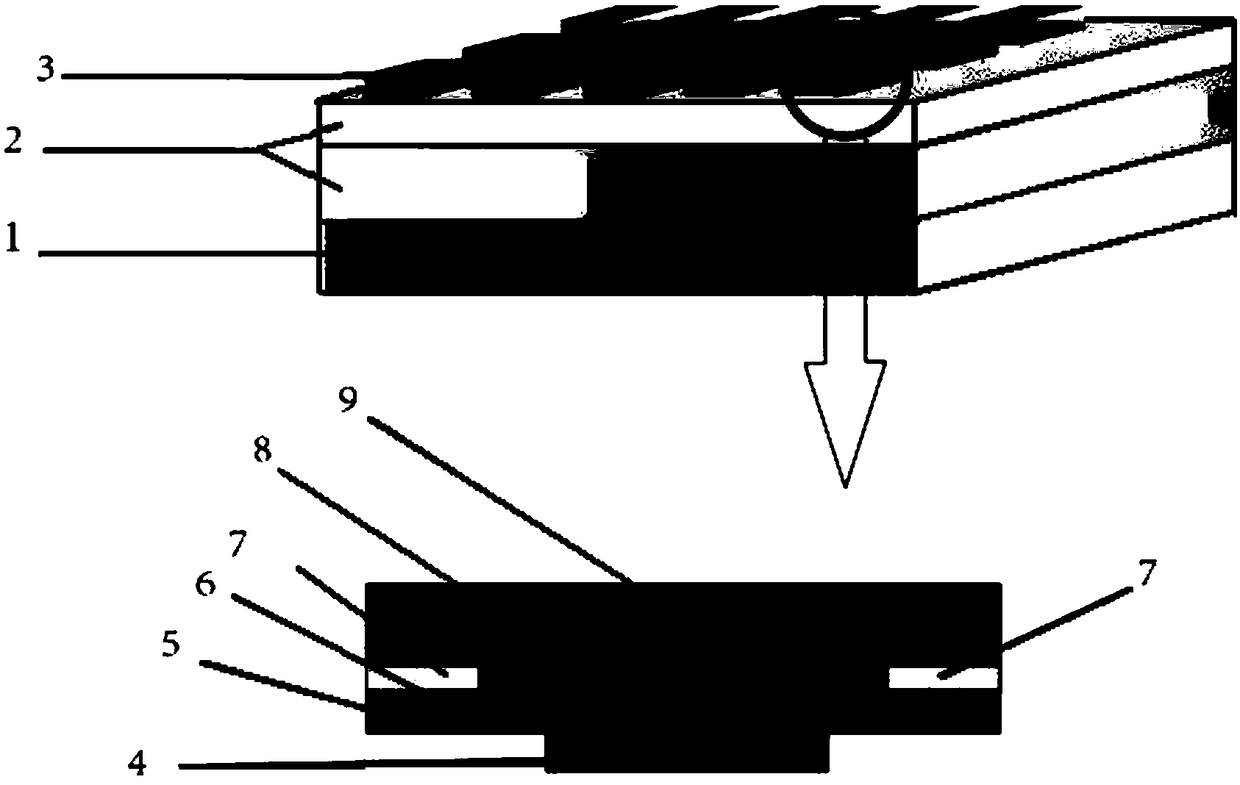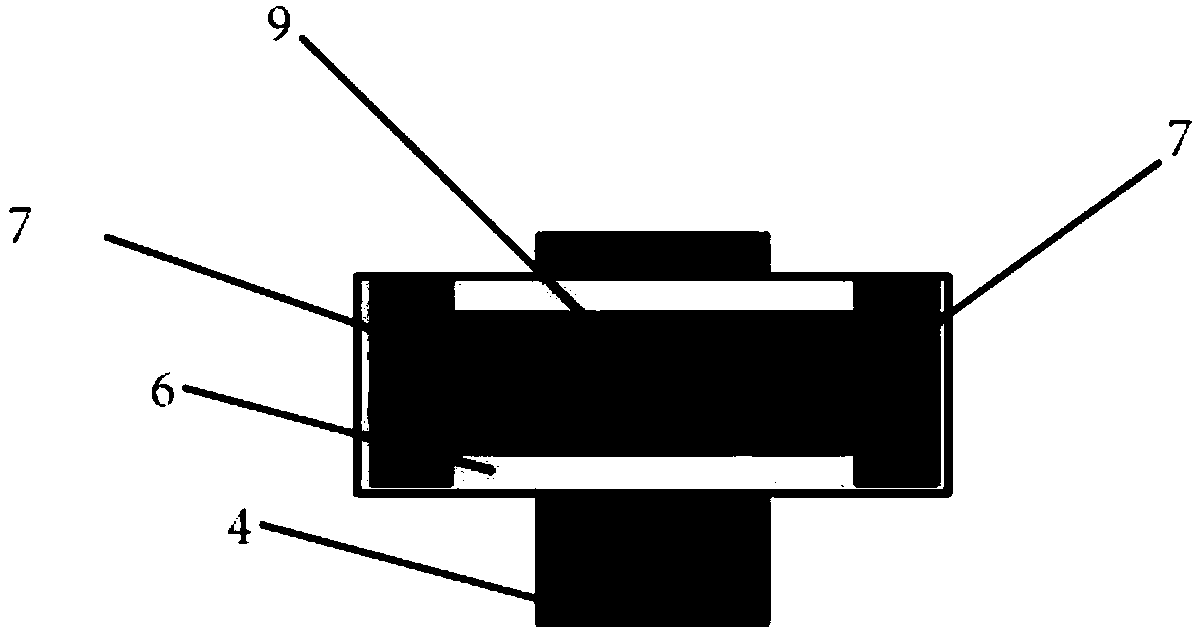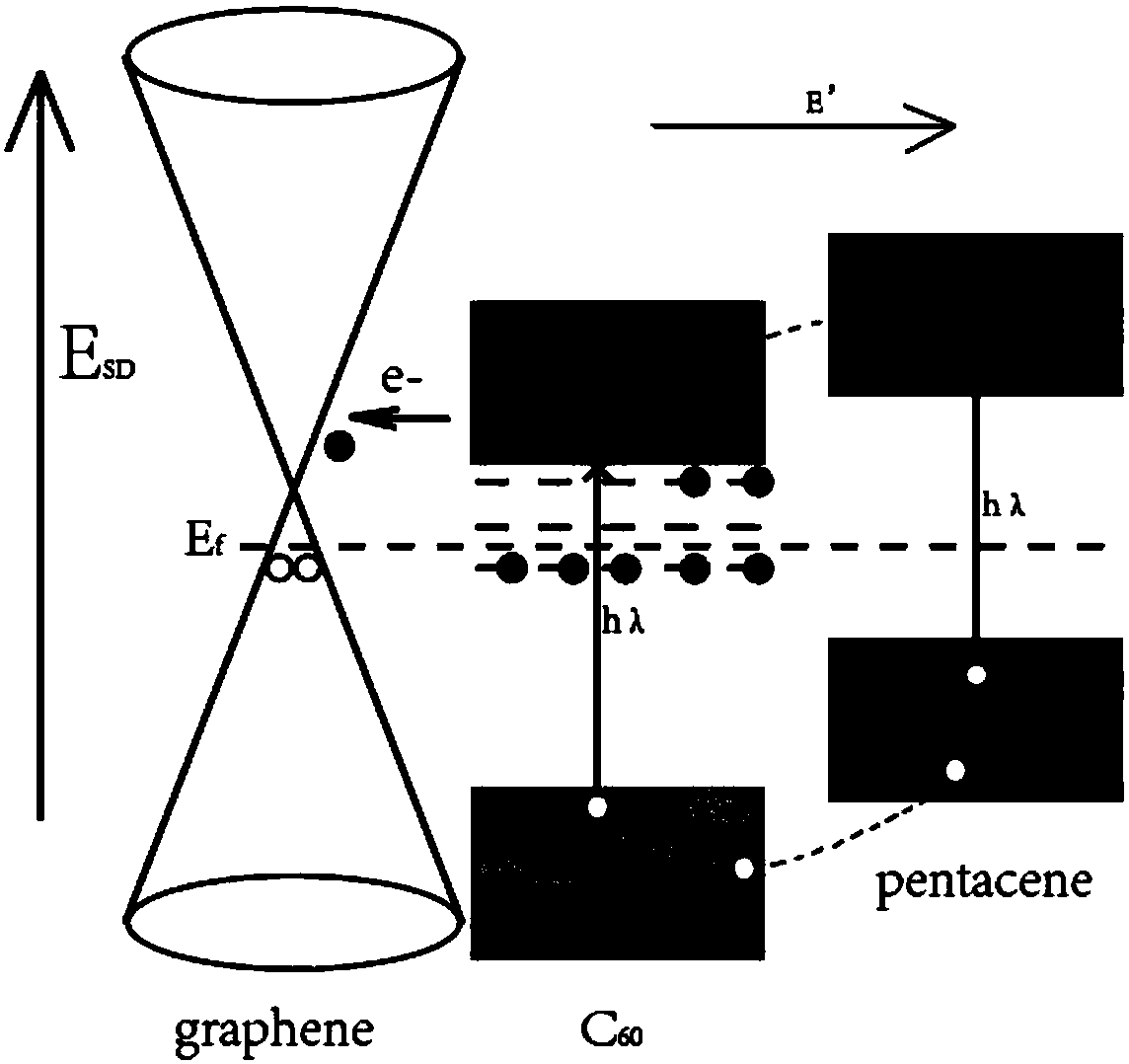Local-field-enhancement-type, wide-spectrum and high-response photoelectric detector
A photodetector and wide-spectrum technology, applied in the field of photodetectors, can solve the problems of narrow detection spectrum and low response, and achieve the effects of widening the detection range, improving the response speed, and improving the mobility.
- Summary
- Abstract
- Description
- Claims
- Application Information
AI Technical Summary
Problems solved by technology
Method used
Image
Examples
Embodiment 1
[0034] The thickness of the fullerene film 8 is 1.0nm, the material is C60, the P-type organic semiconductor film 9 is pentacene, the substrate is a silicon wafer with a readout circuit, the surface is covered with a silicon nitride dielectric layer and the electrical interface of the detection unit , The short-wave band of this device includes visible light, and the long-wave band includes near-infrared; when receiving the short-wave band, C60 and pentacene form an enhanced layer to absorb light radiation and generate electron-hole pairs. After the electron-hole pairs are separated, electrons are injected into graphene6 , The holes are bound to pentacene, causing the conduction channel resistance to change to improve the light response; when receiving long-wavelength bands, graphene 6 is the light absorption layer, and the energy level transition between graphene 6 and C60 causes the reverse injection of electrons, The electrons recombine with the holes of pentacene to amplify ...
Embodiment 2
[0036] The thickness of the fullerene film 8 ranges from 0.5 to 15 nm. The thickness is selected according to the actual situation. The appropriate thickness determines the strength of the fullerene material's ability to absorb electrons. The positions of electron-hole pairs are different in different wavebands. The electrons generated in the short wave band are injected into graphene 6, and the long wave band is in graphene 6. Electron-hole pairs are generated in the EMI and injected into the fullerene film 8 to cause a change in resistance and achieve high response in different wavelength bands.
Embodiment 3
[0038] The graphene 6 is connected to the metal source electrode and the metal drain electrode on the dielectric layer 5, and the conductive channel of the detector is formed after the metal source electrode and the metal drain electrode are applied with the working voltage; the short wave band of this device includes visible light, and the long wave band includes near Infrared, the carrier transport mechanism of visible light and near-infrared are different: when visible light is irradiated on the device, the enhancement layer absorbs and generates photo-generated electron-hole pairs, which diffuse to the interface of the two materials, built-in Under the action of the electric field, the electron-hole pairs are effectively separated, the electrons enter the N-type acceptor fullerene film 8, and the holes are trapped in the P-type organic semiconductor film 9. The electrons accumulated in the fullerene film 8 are The concentration difference between the graphene 6 and the fulle...
PUM
| Property | Measurement | Unit |
|---|---|---|
| Thickness | aaaaa | aaaaa |
| Thickness | aaaaa | aaaaa |
Abstract
Description
Claims
Application Information
 Login to View More
Login to View More - Generate Ideas
- Intellectual Property
- Life Sciences
- Materials
- Tech Scout
- Unparalleled Data Quality
- Higher Quality Content
- 60% Fewer Hallucinations
Browse by: Latest US Patents, China's latest patents, Technical Efficacy Thesaurus, Application Domain, Technology Topic, Popular Technical Reports.
© 2025 PatSnap. All rights reserved.Legal|Privacy policy|Modern Slavery Act Transparency Statement|Sitemap|About US| Contact US: help@patsnap.com



